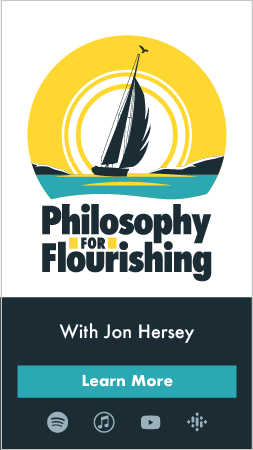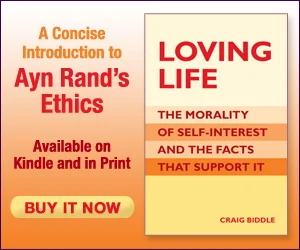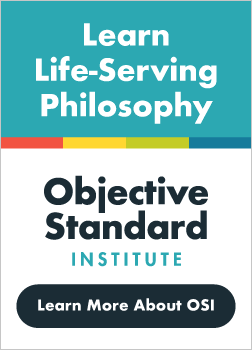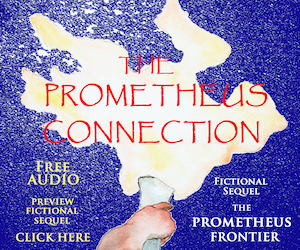In January 2015, the California Department of Public Health received reports of several suspected cases of measles in California and Utah. The connecting links in these, and soon to be many other cases, were visits to Disneyland Resorts in Anaheim.1 By mid-April, when new infections had ceased, 131 measles cases in California were linked to the Disneyland outbreak,2 with at least twelve additional cases in other states.3
As panic swept the nation, many wondered how such a widespread outbreak of measles could have occurred in the United States, a country where measles vaccinations had made this disease seem like a concern of the past. “The problem,” explained Jane Seward, a director of viral diseases at the Centers for Disease Control (CDC), “is that there are these pockets with low vaccination rates. If a [measles] case comes into a population where a lot of people are unvaccinated, that’s where you get the outbreak and where you get the spread.”4
Accordingly, these events brought increased scrutiny to parents who forgo some or all childhood vaccines, whether out of fear of alleged side effects, a desire to have an “all-natural” lifestyle, or religious opposition. Schools in areas with large numbers of vaccine refusers can see vaccination rates fall far below the approximately 95 percent needed to prevent measles outbreaks. This can occur despite school-entry vaccine requirements because of “loopholes” allowing vaccine refusers to send their children to school by obtaining nonmedical or “personal beliefs” exemptions from school vaccination policies.
Typical school rules require vaccines that are jointly recommended by the CDC, the American Academy of Pediatrics (AAP), and the American Academy of Family Physicians (AAFP). This list of recommended vaccines currently includes tetanus, diphtheria, pertussis, polio, pneumococcus, Haemophilus influenzae type B, measles, mumps, rubella, chickenpox, and rotavirus. Some states provide nonmedical exemptions, enabling parents to send their children to school without receiving these vaccines.5 People who favor such exemptions cite them as a means by which parents can maintain a choice regarding which medical treatments their children receive. Those who oppose nonmedical exemptions see them as posing a risk to public health by increasing the possibility that dangerously contagious children could spread infection in schools.
This controversy gained dramatically more attention when then-presidential-hopeful and New Jersey Governor Chris Christie publicly advocated for finding a middle ground, saying of vaccines, “we think that it’s an important part of being sure we protect [our children’s] health and the public health. I also understand that parents need to have some measure of choice in things as well, so that’s the balance that the government has to decide.”6 A heated nationwide debate ensued, with practically every presidential contender commenting on the issue of vaccines, their effectiveness, their purported side effects, and to what extent they should be mandatory.
The appropriate “balance” of how government schools, which are populated by a substantial majority of American children, should approach the issue of vaccine rules and exemptions is a complex matter. But the most important questions surrounding the issue are: How do vaccines work? Does their use involve a significant risk of neurologic harm? How would a proper, strictly rights-protecting government approach these issues? And how, given our current government, which is not limited to the protection of rights, can we most reasonably apply medical knowledge and principles for the purpose of maximizing public safety and health?
The answers to these questions will provide the context for a proper approach to the issue of vaccine choices and requirements.
How Do Vaccines Work?
Hillary Clinton weighed in on Chris Christie’s 2015 vaccine comments with a succinct same-day reply on Twitter: “The science is clear. The earth is round, the sky is blue, and #vaccineswork. Let’s protect all our kids. #GrandmothersKnowBest.”7
Of course, vaccines do work, as evidenced most conspicuously by the worldwide eradication of smallpox and the Western expulsion of endemic polio. Interestingly, however, the pioneers who developed our earliest vaccines did so with little knowledge of how they work.
Since ancient times, physicians have known of the basic fact of immunity—some diseases, once suffered, were never suffered by the same person again. This knowledge was applied as early as the 10th century in China to impart immunity to smallpox by inoculating the uninfected with a small amount of smallpox pus, a process known as variolation (from the Latin for smallpox, Variola).8 After making its way to Europe in the mid-18th century, this practice would fall into disfavor in 1796 when Edward Jenner developed a new method of preventing smallpox after observing that the less harmful cowpox virus, often contracted by milkmaids, could impart lasting immunity to smallpox. Jenner published his findings, inaugurating a process of immunization against smallpox that involved person-to-person transmission of cowpox, a disease that was known in French as vaccine.9
Inoculation methods, such as variolation, involved imparting immunity by infecting a person with the disease in question, but doing so in a controlled environment. By using cowpox—a weaker, less dangerous relative of smallpox—to create lasting immunity to smallpox, Jenner inspired a generation of scientists to seek similar solutions to other diseases. This use of weak imitators, rather than the full strength disease used in simple inoculation, is the defining principle of vaccination; and that principle has animated the creation of every vaccine made since, from rabies to tetanus to polio. As scientific understanding of the immune system developed in the early 20th century, it became clearer how those weak imitators were working.
The immune system as we now understand it has two main arms, referred to as the innate immune system and the adaptive immune system. The innate immune system consists of specialized cells and proteins in the body that have the ability to fight infection per se, but little to no ability to distinguish the specific germ causing the infection. An example of innate immunity is the skin, which defends against infections indiscriminately. The ability to vaccinate against particular diseases lies with the adaptive immune system, which, as its name suggests, has the ability to tailor itself to the particular germs it encounters.
The adaptive immune system works primarily through two types of white blood cells, B lymphocytes and T lymphocytes (so called because they develop in the bone marrow and thymus respectively). These specialized cells carry on their surfaces receptor proteins that are able to bind to antigens, which are small, specifically recognized molecular pieces of germs. Using hepatitis immunity for example, the lymphocyte cell doesn’t respond to the whole hepatitis B virus; rather, several different lymphocytes specifically recognize hepatitis B surface antigen, core antigen, envelope antigen, and others. The typical human being starts out with a complement of lymphocyte cells with the capacity to recognize a vast array of antigens.10 Once first exposed to an antigen, the lymphocyte’s receptor protein (the B cell receptor, T cell receptor) binds to it and activates the cell to clone, producing many “effector” cells that activate the immune system immediately against the germ and many other “memory” cells, which go into a kind of hibernation that they can “wake” from if the body is ever again exposed to the same germ.
Effector B lymphocytes, in particular, have the special capacity to release antibodies—dissolvable copies of their surface receptor proteins that can circulate in the blood and lymph fluid, coating any antigen they specifically recognize and activating the immune system to kill that germ.11
Most modern vaccines work predominantly by stimulating the production of antibodies,12 although many newer vaccines improve activation of the T lymphocyte arm of the adaptive immune system.
An individual’s decision about whether to be vaccinated for a given disease is most often motivated by his personal desire not to catch the disease and his knowledge or beliefs about the effectiveness and potential dangers of the vaccination in question. But for a person or a group responsible for the health and safety of a community of people, such as a school or a corporation, this decision is more complex. What policies and actions are necessary to prevent a disruptive outbreak of disease in this community?
One important part of the decision-making process for determining proper policy in such contexts is a phenomenon known as “herd immunity.” If a certain percentage of people in a group are immune to a disease, whether by having been infected and recovered or by having been vaccinated, those immune people can function as a barrier that can prevent the disease from being transmitted to nonimmune members of the group. Thus, herd immunity works only against diseases transmitted by other people, not against those contracted directly from the environment (such as tetanus). And how well it works depends on how contagious the disease is, what percentage of people in the group are immune, and the degree to which they are immune.13
Modeling herd immunity can be complex, but the following simplified calculations indicate the mechanics of the process. Consider a disease so contagious that every infected person spreads the disease to five new people in a fully susceptible population. In this case, to engineer herd immunity in your group you need to ensure that the number of susceptible members is less than one in five. In other words, more than 80 percent of the population needs to be immune in order for the disease to “fizzle out” rather than continue to spread in the group. If the vaccine for that disease is only 90 percent effective at inducing immunity, then at least 89 percent of the group needs to be vaccinated so that at least 80 percent are immune to the disease. For a much more contagious disease, or for a disease with a less effective vaccine, this threshold might be higher than 89 percent.
Measles is one of the most contagious diseases known to man, with each new case producing twelve to eighteen new infections in a nonimmune population, leading epidemiologists to calculate that at least 92 to 94 percent of a group must be vaccinated in order to prevent a measles outbreak in that group.14 This is why school principals, corporate CEOs, military leaders, and hospital administrators institute immunization programs that target nearly all the members of their respective populations—they need to ensure that a large enough number are vaccinated in order to prevent disease outbreaks.
Alleged Harms of Vaccines
The foregoing is well-established, noncontroversial, scientific fact. Here we turn to controversial matters.
Although Hillary Clinton was correct when she stated that vaccines work, for the many people who oppose vaccines altogether or who are hesitant to vaccinate their children, she missed the point entirely. After all, many acknowledge the clear evidence that the vaccines currently recommended for routine use are effective in preventing disease and nevertheless argue that the harms of vaccines exceed their benefits. Clinton’s main presidential challenger, Donald Trump, gave voice to one of these arguments on the September 2015 CNN-hosted Republican debate:
Autism has become an epidemic. Twenty-five years ago, [thirty-five] years ago, you look at the statistics, not even close. It has gotten totally out of control. I am totally in favor of vaccines. But I want smaller doses over a longer period of time. . . . [A]nd we've had so many instances, people that work for me. Just the other day, two years old, two and a half years old, a child, a beautiful child went to have the vaccine, and came back, and a week later got a tremendous fever, got very, very sick, now is autistic.15
In the past thirty-five years to which Trump refers, such accusations about vaccines have been hurled with surprising frequency. Among them have been allegations that the whole cell pertussis vaccine causes cognitive impairment and epilepsy, that the influenza vaccine worsens multiple sclerosis, and that the Lyme disease vaccine caused chronic arthritis. None of these fears, however, has been so pervasive as the fear that vaccines, and in particular the combined measles-mumps-rubella (MMR) vaccine, cause autism.
The vaccine-autism hypothesis appeared in 1998 when a British gastroenterologist, Andrew Wakefield, published a paper that drew attention to a possible link between the MMR vaccine and both inflammatory bowel disease (IBD) and autism.16 The paper itself offered no evidence of this linkage, merely alluding to a possible linkage based on molecular biology experiments that showed residual measles virus in the bowel tissue of a series of children with IBD and autism. This paper turned out to be fraudulent. In 2004, Brian Deer, a journalist writing for the Sunday Times in London, discovered that the parents of several of the children in Wakefield’s experiment were suing vaccine manufacturers and that Wakefield had accepted money from their trial lawyers to fund his study—payment he had failed to disclose to his co-authors.17 Ten of them promptly withdrew their names from the paper.18 Even more damning to Wakefield’s credibility, and the credibility of the vaccine-autism hypothesis, was 2007 testimony given by Nicholas Chadwick, a former colleague of Wakefield’s, that Wakefield had knowingly published false data in his 1998 paper.19
Despite the fact that Wakefield had presented shoddy and downright fraudulent evidence of a vaccine-autism link, his message had already been broadcast, and fears spread among the lay public. The international scientific community was, however, quite willing to assuage these fears with evidence that there is no link between vaccines and autism. Between 2002 and 2007, five large-scale studies (and many smaller ones) were undertaken comparing rates of autism in children who had received supposedly autism-causing vaccine components (MMR vaccine or thimerosal, a mercury-containing preservative in some vaccines) with rates of autism in children who had not received vaccine or had received less vaccine. These studies compared 1,256,407 children and found no association between vaccines and autism.20 The onset of autism occurred at the same rate for children who had received the vaccines as for children who had not. In other words, the vaccines did not cause autism.
Similar studies have proven that the pertussis vaccine did not cause neurodevelopmental impairment and epilepsy,21 and that the influenza vaccine did not worsen multiple sclerosis.22
What Happens When Vaccines Do Have a Harmful Side Effect
For the vast majority of accusations against vaccines, scientists have shown that the claims are spurious. Yet many anti-vaccine activists, such as Barbara Loe Fisher of the National Vaccine Information Center, argue that this science is not to be trusted:
The pathetic attempts by the pencil pushers to write off onset of brain and immune system dysfunction after vaccination in previously healthy people as just a “coincidence” will not wash. The people, whose lives have been ruined by doctors too proud to admit the harm being done, will not let them get away with it.23
Fisher, the National Vaccine Information Center, and other anti-vaccine activists claim that physicians cover up catastrophic side effects of vaccines because they are “too proud” to admit their own culpability in harming children. But vaccinologists have a strong record of withdrawing their recommendations for vaccines when science clearly demonstrates a concerning side effect.
Paul Offit, an infectious disease specialist at Children’s Hospital of Philadelphia, has published prolifically about the anti-vaccine movement and vaccine hesitancy. In his book, Deadly Choices: How the Anti-Vaccine Movement Threatens Us All, he relates two narratives that cast doubt on the notion of vaccinologists as conspirators—the withdrawal of the oral polio vaccine and the first-generation rotavirus vaccine.
The first polio vaccine, developed by Jonas Salk at the University of Pittsburgh in 1954, made use of a fully killed polio virus. It was widely used for several years, but in 1961, an orally administered live-attenuated (or “weakened”) polio virus was developed by Albert Sabin at the University of Cincinnati. The oral “weakened” polio vaccine was well received by parents because it did not require injection and because evidence showed it to be more effective in preventing polio. There was, however, a catch. Studies showed that in a small number of cases the weakened virus used in the Sabin polio vaccine caused a full-blown polio infection resulting in permanent paralysis. In 1990, the oral polio vaccine paralyzed the son of journalist John Salamone. Salamone’s advocacy led the CDC’s Advisory Council on Immunization Practices to withdraw its recommendation for the oral polio vaccine in 1998. The fully killed Salk vaccine is now the only polio vaccine used in the United States.24
Further evidence of the non-maleficence of vaccinologists came in the late 1990s with the advent of RotaShield®, the first vaccine against the diarrhea-inducing rotavirus. Despite its effectiveness in preventing rotavirus disease, reports emerged of patients who developed small intestine intussusception, a type of bowel blockage that can be fatal, after having the vaccine. Researchers at the Centers for Disease Control responded quickly. By using a set of data known as the Vaccine Safety Datalink, they were able to compare rates of intussusception in children who received the rotavirus vaccine and rates of intussusception in those who had not received it. The data confirmed that the rotavirus vaccine was at fault and, in 1999, the CDC and the AAP quickly withdrew their support of its use. It was withdrawn from the market and has now been replaced with a second-generation rotavirus vaccine that does not cause intussusception.25
The vaccines included in the CDC/AAP vaccine schedule are recommended not because vaccinologists are too proud to admit that they are dangerous but because they know them to be safe and effective and sincerely believe that their relatively minor side effects are vastly outweighed by their benefits in preventing infectious disease. The defining criteria for inclusion on this vaccine schedule is that a disease is highly deadly—such as tetanus, meningitis, and diphtheria—or highly dangerous and contagious—such as measles, mumps, rubella, polio, and rotavirus.
Given the evidence and knowledge that scientists and doctors have amassed regarding vaccinations, the reasonable choice for parents is to vaccinate their children against these diseases.
This brings us to the most controversial question at hand: What is the proper role of government in regard to vaccinations? Should government ever mandate vaccinations? If so, why? If not, why not?
Vaccines and the Law
The early history of vaccine policy is essentially a history of smallpox law. Smallpox is perhaps the most devastating disease to ever exist, killing more than five hundred million people before its eradication in 1979. “When settlers brought smallpox to North America,” writes Paul Offit, “they reduced the native population from seventy million to six hundred thousand. No disease was more feared, more destructive, or more loathsome than smallpox.”26
It was this fear of smallpox that, in the 19th century, prompted the British government to enforce widespread use of Jenner’s lifesaving vaccine. Vaccine policy began in England in 1853 with the passage by the House of Lords of a “Bill to Further Extend and Make Compulsory the Practice of Vaccination.” This legislation required that all parents have their children vaccinated against smallpox by the age of six months on punishment of fine or imprisonment. This law was poorly enforced, and vaccination rates languished. In 1867, a new law enacted a new process of punishment beginning with a warning and progressing to seizure of assets from obstinate vaccine refusers.27
Shortly after the passage of compulsory vaccination in England, vaccine policy began to emerge in the United States. Whereas British vaccine policy was decided at the national level, United States vaccine policy would take hold at the state level. State power to enforce vaccination against smallpox was cemented in a landmark Supreme Court case in 1905, Jacobson v. Massachusetts. The plaintiff in the case was Henning Jacobson, a Lutheran minister who during a Boston smallpox epidemic refused to be vaccinated as ordered by the Cambridge Board of Health in 1902. Jacobson’s lawyer argued that Massachusetts, in fining Jacobson five dollars for refusing vaccination, was violating the Fourteenth Amendment and that “a compulsory vaccination law is unreasonable, arbitrary, and oppressive, and therefore hostile to the inherent right of every freeman to care for his own body and health in such a way as to him seems best.”28
The Court disagreed, ruling seven to two against Jacobson. Writing for the majority, Justice John Marshall Harlan explained:
The liberty secured in the Constitution of the United States to every person within its jurisdiction does not import an absolute right to each person to be, at all times and in all circumstances, wholly freed from restraint. There are manifold restraints to which every person is necessarily subject for the common good.”29
This decision, cited in seventy later Supreme Court cases, set a strong precedent for state authority to enact compulsory vaccination.
By the 1950s, the Unites States had seen its last case of smallpox and, lacking such a terrifyingly deadly disease to protect against, compulsory vaccination was perceived as heavy-handed. A more mild-mannered vaccine policy, “mandatory vaccination,” emerged as public health officials worked to eradicate the measles virus from the United States. Unlike smallpox, which was an equal-opportunity killer, measles occurred most often in school-age children. This led many to reason that tying vaccination to school entry was the best approach to measles. Betty Bumpers, wife of Arkansas Senator Dale Bumpers, partnered with First Lady Rosalynn Carter to create the Childhood Immunization Initiative, purchasing vaccines for children whose parents could not afford them. With funding in place, mandatory vaccination for school entry spread quickly, increasing from twenty-five states in 1968, to forty in 1974, and to all fifty states by 1981. These laws were incredibly effective in reducing measles infections. By 1998, an infection that had once occurred in virtually all school-aged children by adolescence, killing five-hundred children per year,30 occurred in only eighty-nine children, the majority of whom came from other countries.31
The key difference in this practice of “mandatory vaccination” was in the punishment. Refusers under compulsory vaccination laws were either forcibly vaccinated against their will or faced forced punishments such as fines or imprisonment. Under mandatory vaccination laws, refusers were prevented from participating in a government service. Compulsory vaccination programs in the United States were highly successful in decreasing rates of infectious diseases in the 20th century, but a series of legal decisions, beginning in the 1960s, weakened vaccine mandates.
In 1966, when the New York State Assembly passed a bill mandating polio vaccination for school entry, it contained a crucial caveat: Due to the lobbying efforts of Christian Scientists, the law contained an exclusion for parents who objected on religious grounds. Religious groups in other states made similar legal overtures, breeding legislative and judicial decisions that enacted religious exemptions to vaccine mandates in forty-eight states by 2009. Further decisions expanded these exemptions to include philosophical exemptions for “beliefs held with the strength of religious conviction”; by 2010, twenty-one states had philosophical exemptions on the books.32
Religious and philosophical objections, in addition to existing exemptions for children who for medical reasons (e.g., allergy to a vaccine component) could not safely receive one or more vaccines, had a noticeable impact on vaccination rates and disease incidence. Between 1991 and 2004, the number of unvaccinated children in states with philosophical exemptions doubled.33 A study of unvaccinated children in Colorado, a state with notoriously loose vaccine mandates, found that they were more than twenty-three times more likely to contract whooping cough.34 Another study of unvaccinated children found that their risk of contracting measles was 170 times greater than that of vaccinated children.35
Vaccines make a significant difference to public health. When vaccinations are mandatory and enforced, lives are saved. When they are not, lives are lost.
A Rational Approach to Vaccine Policy
Vaccine policy in the United States currently involves a state-level potpourri of mandatory vaccination laws for school entry with varying allowances for religious and philosophical exemptions. The result has been a resurgence of many nearly eradicated infectious diseases. Any rational position on the legitimacy of government vaccine policy must account for these facts.
With those facts in mind, we can proceed to consider the proper role of government in infectious diseases.
The function of a rights-protecting government is to protect citizens’ rights by banning force from social relations and by using force only in retaliation and only against those who initiate—or threaten to initiate—force against its citizens.
Within this framework, government clearly must tightly control germs, viruses, or the like that can be weaponized or used as means of warfare. And government must use force as necessary to ensure that foreign aggressors do not launch biological attacks against U.S. citizens. No rational person would dispute this.
Does government have a legitimate role to play with respect to such threats within U.S. or state borders? We think it does.
As we have seen, diseases circulating within a nation’s borders pose an objective threat to public health. This fact confers on government a legitimate role in domestic surveillance of infectious diseases, and in passing and enforcing laws to ensure that citizens do not pose an objective threat to the lives and rights of others.
In the case of a domestic outbreak of a contagious disease that is incapacitating enough or fatal enough to represent a serious threat to the lives of Americans or national security, the government can appropriately use an array of forcible methods to contain it. Such methods include enforcement of public hygiene measures and quarantine to limit spread of the disease. Where this is not effective, compulsory vaccination to induce adequate herd immunity may be necessary. Historical instances of compulsory vaccination against the scourge of smallpox rose to this level.
Otherwise, a rights-protecting government has little role in the policing of vaccines, other than generally to support the freedom of individuals to establish vaccine rules for their own private homes and businesses.
Under a proper, rights-protecting government, in the absence of a deadly disease outbreak, businesses, child-care centers, and schools would be able to determine their own rules about what vaccinations their customers, employees, and students must have. Reasonable school administrators would likely require a basic set of vaccines against contagious childhood illnesses, thereby ensuring the herd immunity necessary to prevent outbreaks. Parents who wanted to forgo one or more vaccinations for their children would be free to enroll them in schools and child-care centers that do not require vaccinations, or that do not require as many. On the other hand, parents who feel strongly that they and their children have an extra level of protection against disease outbreak could take their business to schools with more rigid vaccine rules.
Of course, the problem is that we do not currently live under a government that is limited to the protection of rights. Among other relevant facts today, state governments, not private owners, run the majority of the schools in the United States. In this system, liberty-minded people often disagree on the propriety of vaccine mandates. Jeffrey Singer, writing for Reason, explains that he, even as a “libertarian physician,” supports nonmedical exemptions because state truancy law makes it too difficult for vaccine refusers to opt out of the government school system:
It has also been suggested by some libertarians that vaccination be a mandatory precondition of admission to public schools—with almost no exception. But attending a public school is not analogous to enrolling in Medicaid. . . . K-12 education has been mandatory in most states since the beginning of the 20th century, and the government-monopoly school system makes it very difficult (and unaffordable to many) to obtain the education by any means other than the public school system. Most people cannot afford to support the public school system through the taxes they pay and still have enough money left over to pay for private or parochial school (although some parents of modest means make heroic sacrifices to do so). And not everyone has the time or capability to engage in home schooling. When it comes to enrolling children in public schools, most parents are trapped.36
Singer certainly has a point—having strong vaccine mandates without nonmedical exemptions in our current government school system is no different from compulsory vaccination. It amounts to forcing those who cannot opt out of government school to vaccinate their children under penalty of financial loss. This is unfortunate and, as we indicate above, not the system that should exist.
But allowing for nonmedical exemptions under the current regime of government-run schools creates worse force against the majority of parents who choose to vaccinate their children. These parents are no more able to opt out of government schools than are vaccine opposers. Allowing for nonmedical vaccine exemptions adds insult to injury: Not only are their children forced to go to government schools; they are further forced to go at risk of contracting measles or the like from classmates whose parents chose not to vaccinate. (Even when vaccinated, a child may be at risk for various diseases because vaccines sometimes fail to create an immune response, and immunity wanes over time.)
In our view, the best approach, in the short term, is to disallow nonmedical exemptions to vaccine mandates so that the majority of our children are not forced into a situation where they are exposed to resurrected childhood diseases of the past. The rights-violations entailed by these strong vaccine mandates could be mitigated by immediate advocacy for financial restitution of government school taxes paid by those who oppose vaccination for religious or philosophical reasons. In the long term, where diseases are not harmful or deadly enough to warrant direct government intervention, abolition of the government school system would lead to a system where individual school owners and parents could make their own choices about vaccine rules.
Conclusion
Vaccination is a life-saving innovation that has eradicated deadly and debilitating diseases and continues to limit dramatically the harm of many others. Currently recommended vaccines generally have minor side effects, and there is no credible scientific evidence that they cause any permanent harm.
Consequently, Americans should embrace vaccines and their immense value. All parents should vaccinate their children, primarily to protect them from harm and, secondarily, through herd immunity, to help protect highly susceptible individuals such as infants who have not yet been fully vaccinated or people with compromised immune systems.
It is entirely rational for schools to require certain vaccinations and, although the government continues to control most schools, the best policy is to disallow nonmedical exemptions to vaccine mandates while, in the long term, seeking a truly free system of education that allows a greater range of options for both vaccine supporters and vaccine refusers.
You might also like
Endnotes
1. Jennifer Zipprich et al., “Measles Outbreak—California, December 2014–February 2015,” Morbidity and Mortality Weekly Report (MMWR), vol. 64, no. 6, February 20, 2015, 153–54, http://www.cdc.gov/mmwr/preview/mmwrhtml/mm6406a5.htm.
2. “Measles Outbreak That Began in December Now Over,” California Department of Public Health, April 17, 2015, https://www.cdph.ca.gov/Pages/NR15-029.aspx.
3. Nakia S. Clemmons et al., “Measles—United States, January 4–April 2, 2015,” Morbidity and Mortality Weekly Report (MMWR), vol. 64, no. 14, April 17, 2015, 373–76, http://www.cdc.gov/mmwr/preview/mmwrhtml/mm6414a1.htm.
4. Adam Nagourney and Abby Goodnough, “Measles Cases Linked to Disneyland Rise, and Debate over Vaccinations Intensifies,” New York Times, January 21, 2015, http://www.nytimes.com/2015/01/22/us/measles-cases-linked-to-disneyland-rise-and-debate-over-vaccinations-intensifies.html?_r=0.
5. Advisory Committee on Immunization Practices, “Recommended Immunization Schedules for Persons Aged 0 through 18 Years,” Centers for Disease Control, January 1, 2016, http://www.cdc.gov/vaccines/schedules/downloads/child/0-18yrs-child-combined-schedule.pdf.
6. Philip Rucker, “Christie Clarifies Comments on Measles Vaccine after Call for ‘Balance’ Causes Stir,” Washington Post, February 2, 2015, https://www.washingtonpost.com/news/post-politics/wp/2015/02/02/christie-breaks-with-obama-over-measles-vaccine-calls-for-balance/.
7. Hillary Clinton, Twitter post, February 2, 2015, 7:45 p.m., https://twitter.com/HillaryClinton/status/562456798020386816?ref_src=twsrc%5Etfw.[groups_can capability="access_html"]
8. Susan L. Plotkin and Stanley A. Plotkin, “A Short History of Vaccination,” in Vaccines, 6th ed. (Philadelphia: Saunders, 2012), 1.
9. Plotkin and Plotkin, “A Short History of Vaccination,” 2.
10. Wiliam E. Paul, “The Immune System,” in Fundamental Immunology, 7th ed. (Philadelphia: Lippincott Williams & Wilkins, 2013), 2.
11. Paul, “The Immune System,” 3–8.
12. Claire-Ann Siegrist, “Vaccine Immunology,” in Vaccines, 6th ed. (Philadelphia: Saunders, 2012), 14.
13. Paul E. M. Fine and Kim Mulholland, “Community Immunity,” in Vaccines, 6th ed. (Philadelphia: Saunders, 2012), 1395–96.
14. Fine and Mulholland, Community Immunity,” 1399.
15. “CNN Reagan Library Debate: Later Debate Full Transcript,” CNN Pressroom, September 16, 2015, http://cnnpressroom.blogs.cnn.com/2015/09/16/cnn-reagan-library-debate-later-debate-full-transcript/.
16. Andrew J. Wakefield et al., “Ileal-Lymphoid-Nodular Hyperplasia, Non-Specific Colitis, and Pervasive Developmental Disorder in Children,” Lancet, vol. 351, no. 9103, February 28, 1998, 637–41.
17. Brian Deer, “Focus: MMR—The Truth behind the Crisis,” The Sunday Times (London), February 22, 2004.
18. Paul A. Offit, Deadly Choices: How the Anti-Vaccine Movement Threatens Us All (New York: Basic Books, 2011), 93–94.
19. Cedillo v. Secretary of Health and Human Services, Case No. 98-916V, United States Court of Federal Claims, June 22, 2007, 2281–94, http://www.uscfc.uscourts.gov/cedillo-v-secretary-health-and-human-services-case-no-98916v-concluded-june-26-2007.
20. Luke E. Taylor et al., “Vaccines Are Not Associated with Autism: An Evidence-Based Meta-Analysis of Case-Control and Cohort Studies,” Vaccine, vol. 32, no. 29, June 17, 2014, 3623–29.
21. James D. Cherry, “Pertussis Vaccine Encephalopathy: It Is Time to Recognize It as the Myth That It Is,” JAMA, vol. 63, no. 12, March 23, 1990, 1679–80.
22. A. E. Miller et al., “A Multicenter, Randomized, Double-Blind, Placebo-Controlled Trial of Influenza Immunization in Multiple Sclerosis,” Neurology, vol. 48, no. 2, February 1997, 312–14.
23. Barbara Loe Fisher, “Pencil Pushers Deny Vaccine/Optic Neuritis Link,” Vaccine Awakening, June 14, 2006, http://vaccineawakening.blogspot.com/2006/06/pencil-pushers-deny-vaccineoptic.html.
24. Offit, Deadly Choices, 77–80.
25. Offit, Deadly Choices, 71–73.
26. Offit, Deadly Choices, 106.
27. Offit, Deadly Choices, 107–9.
28. Offit, Deadly Choices, 129.
29. Offit, Deadly Choices, 130.
30. “Measles,” in Epidemiology and Prevention of Vaccine-Preventable Diseases, 13th ed. (Centers for Disease Control and Prevention, 2015), http://www.cdc.gov/vaccines/pubs/pinkbook/meas.html.
31. Offit, Deadly Choices, 136–38.
32. Offit, Deadly Choices, 142.
33. Offit, Deadly Choices, 143.
34. Offit, Deadly Choices, 143.
35. Offit, Deadly Choices, 143.
36. Jeffrey A. Singer, “Seeking Balance in Vaccination Laws,” reason.com, February 7, 2015, http://reason.com/archives/2015/02/07/seeking-balance-in-vaccination-laws.[/groups_can]

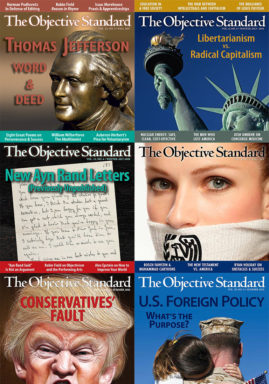
![[TEST] The Objective Standard](https://test.theobjectivestandard.com/wp-content/uploads/2017/10/logo.png)






